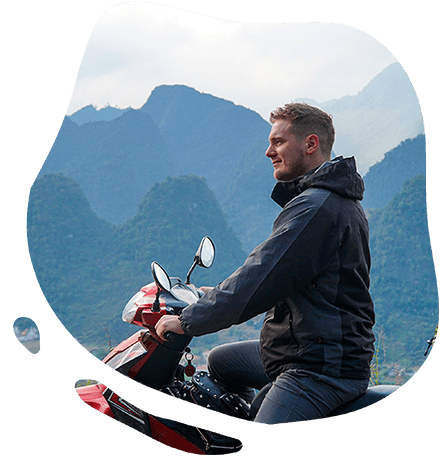What is Dong Van Karst Plateau?
The Dong Van Karst Plateau is a remarkable geological and cultural region located in Ha Giang Province. Designated as a UNESCO Global Geopark in 2010, it is renowned for its unique limestone landscapes, rugged mountains, and rich ethnic diversity. The karst plateau covers an area of about 2,356 square kilometers and is home to more than 17 different ethnic minority groups, each with its own distinct culture and traditions.
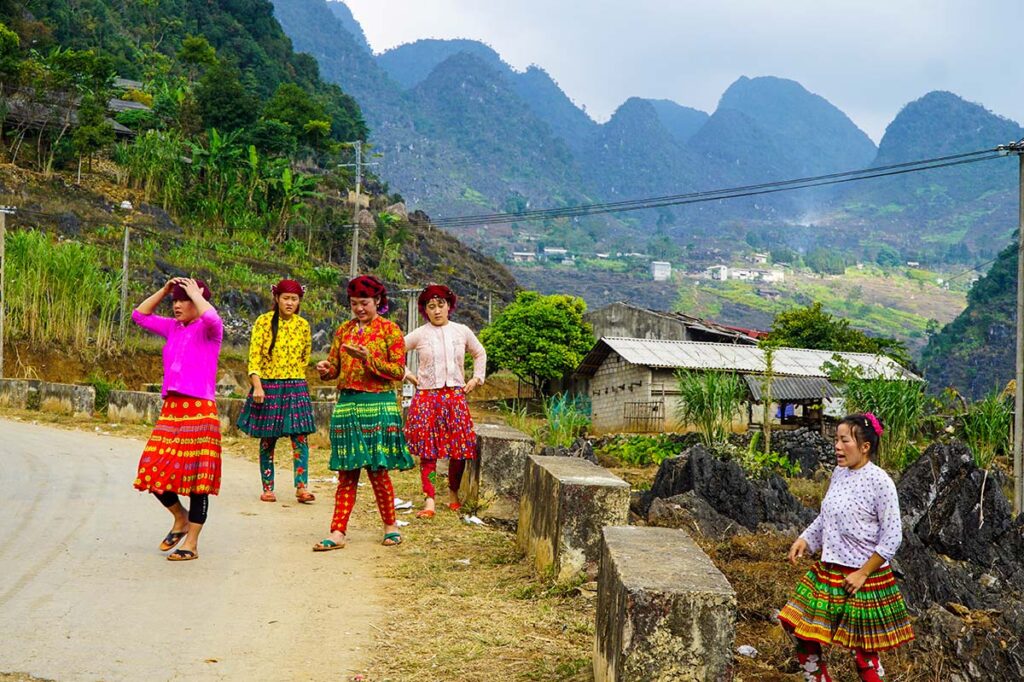
The geological formations in the Dong Van Karst Plateau are characterized by limestone formations, deep canyons, and karst peaks, creating a breathtaking and otherworldly scenery. It offers various opportunities for trekking, hiking, and exploring, making it a popular destination for adventurous travelers seeking off-the-beaten-path experiences.

Beyond its geological significance, the region is culturally significant as it has preserved traditional ways of life and customs of its diverse ethnic communities. You can engage with the local people, witness their unique customs, and experience the rich tapestry of Ha Giang’s cultural heritage.
The best sights in Dong Van Karst Plateau
1. Ma Pi Leng Pass
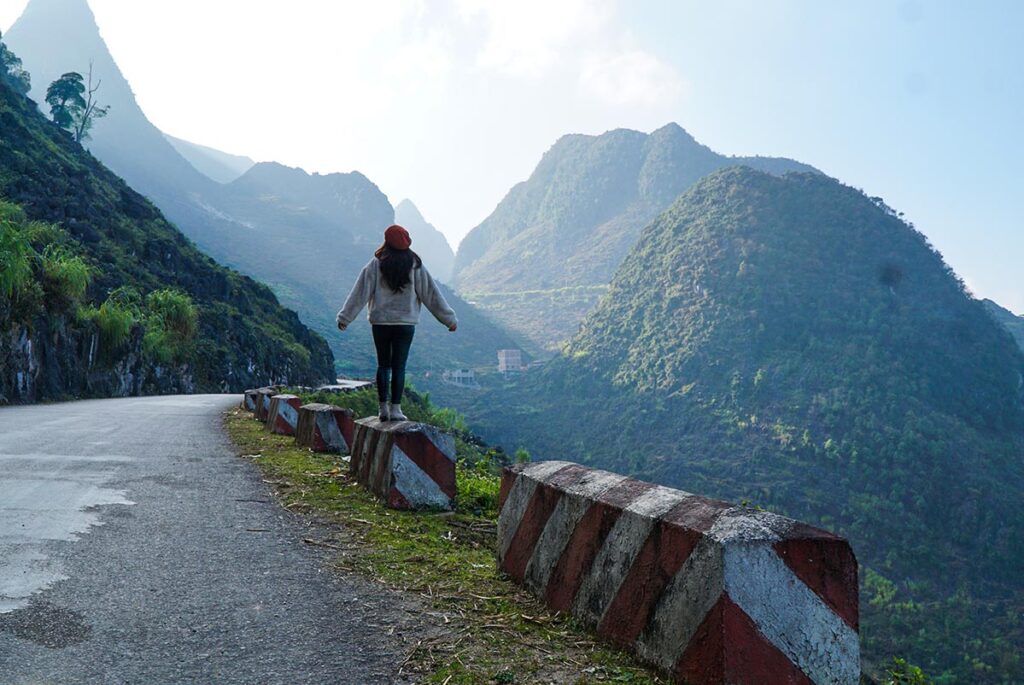
Known as the “King of Mountain Passes” in Vietnam, Ma Pi Leng Pass offers awe-inspiring views of deep canyons and majestic limestone peaks, making it a must-visit spot for breathtaking panoramas.
2. Meo Vac Market
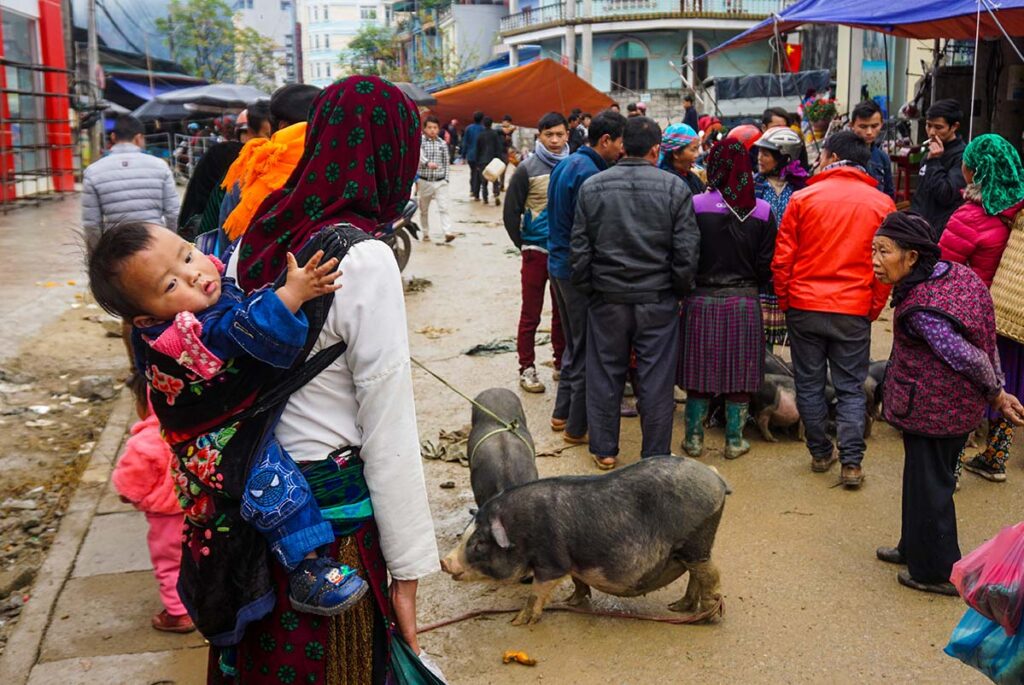
The vibrant Meo Vac market showcases the rich cultural diversity of the region, where locals from different ethnic groups gather to trade goods, including livestock and traditional crafts.
3. Tham Ma Pass
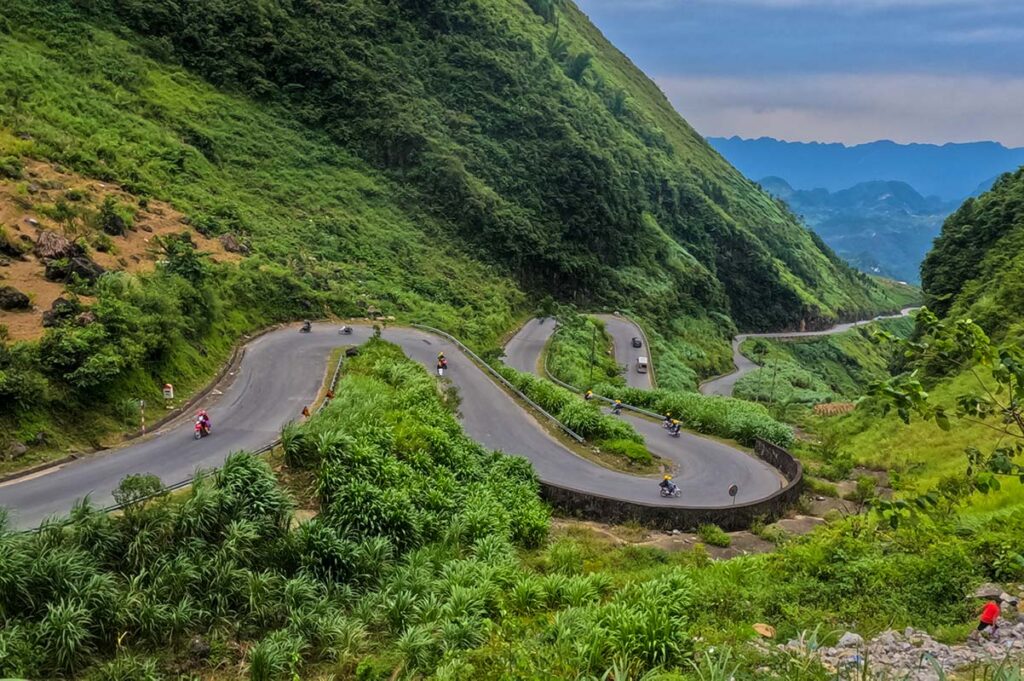
A scenic mountain pass with an iconic “S” shaped road, Tham Ma Pass offers stunning vistas of terraced rice fields and valleys, making it a popular stop for photography enthusiasts.
4. Dong Van Old Quarter
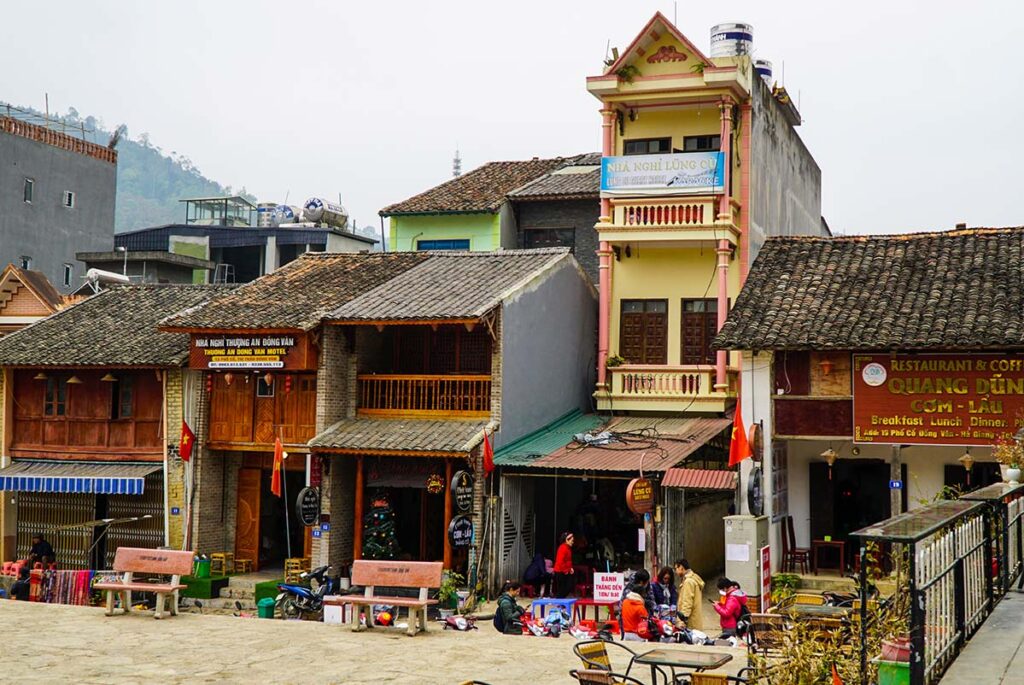
Step back in time as you wander through the narrow, ancient streets of Dong Van Old Quarter, lined with well-preserved colonial-style buildings and charming coffee shops.
5. Lung Cu Flag Tower
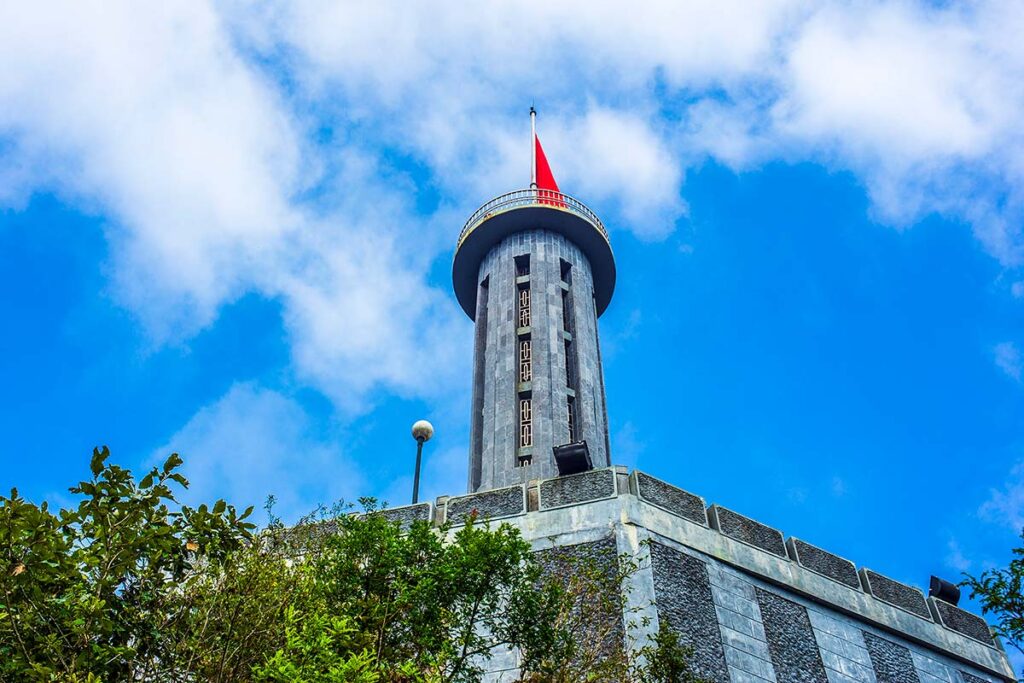
The northernmost point of Vietnam, Lung Cu Flag Tower stands on top of a mountain, offering breathtaking views of both the Vietnamese countryside and China’s border.
6. Quan Ba Heaven Gate
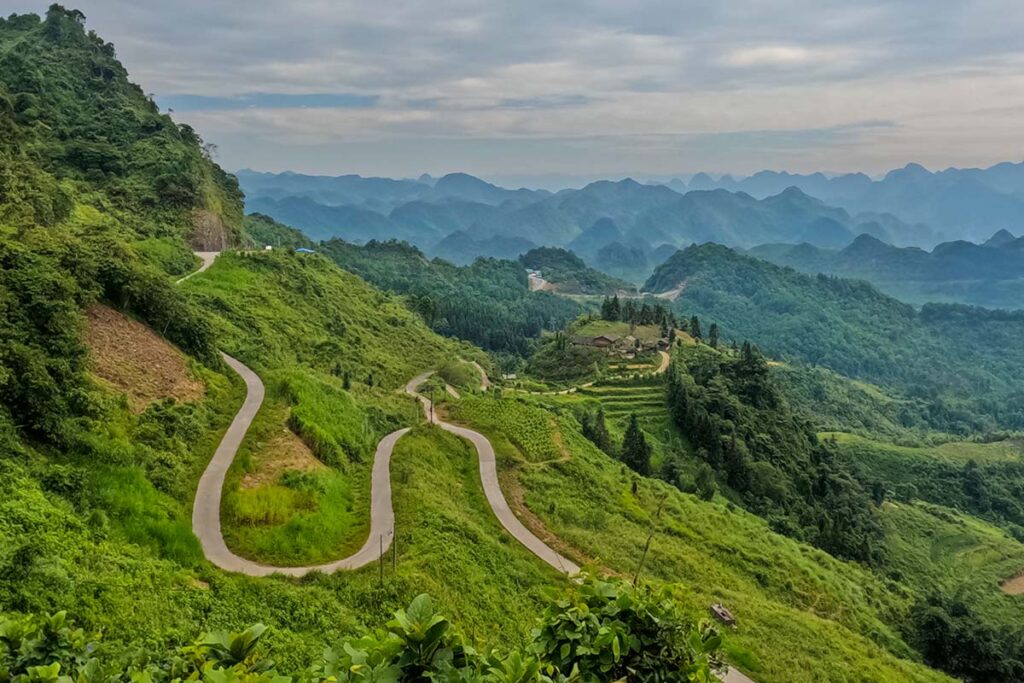
Also known as “Heaven’s Gate,” this picturesque viewpoint provides stunning views of the Twin Mountains, creating a captivating sight for nature lovers and photographers.
7. Sung La Valley
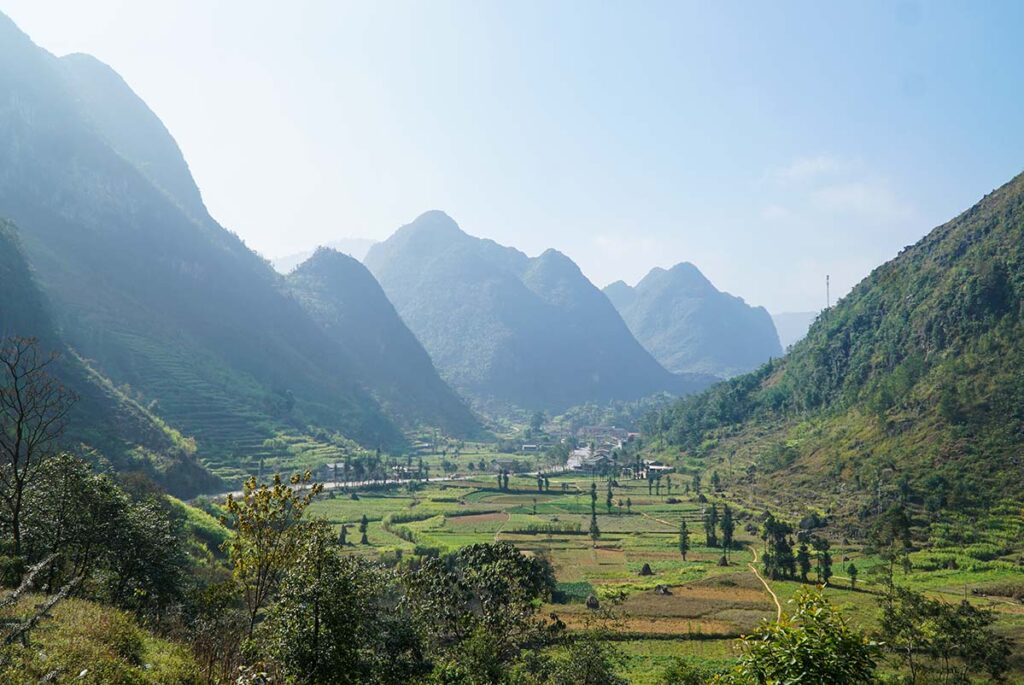
Nestled amidst lush greenery and colorful flower fields, Sung La Valley offers a serene escape where travelers can immerse themselves in the tranquil beauty of the countryside.
8. Hmong Palace (Vuong Family Palace)
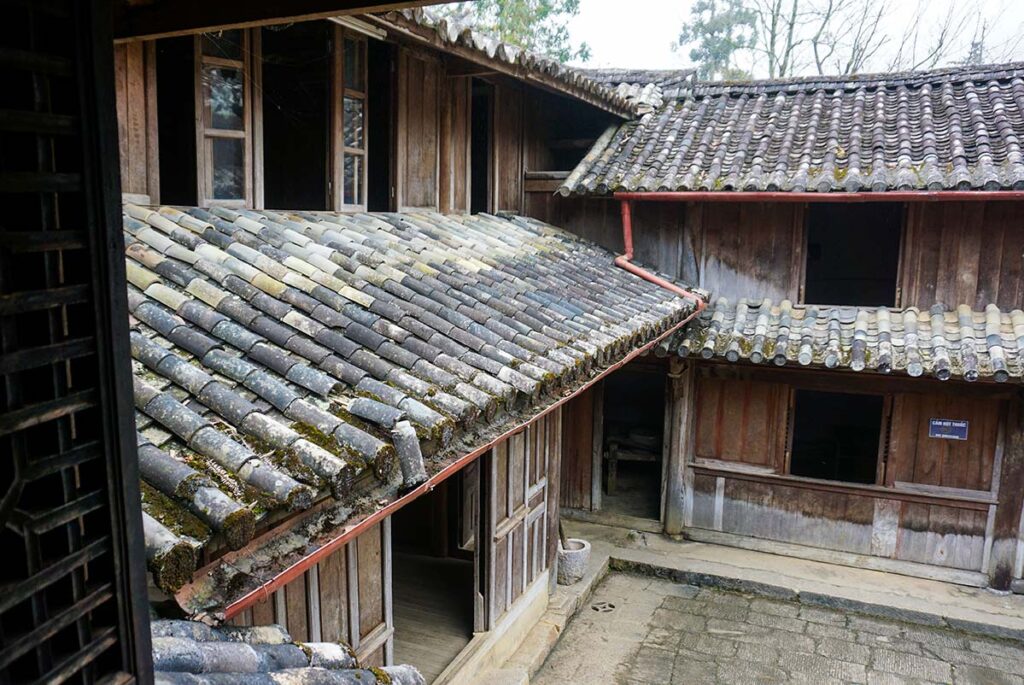
Discover the historical gem of Dong Van Karst Plateau, the Hmong Palace, a grand mansion that served as the residence of the Hmong king, showcasing the region’s fascinating past and cultural heritage.
9. Dong Van Sunday Market
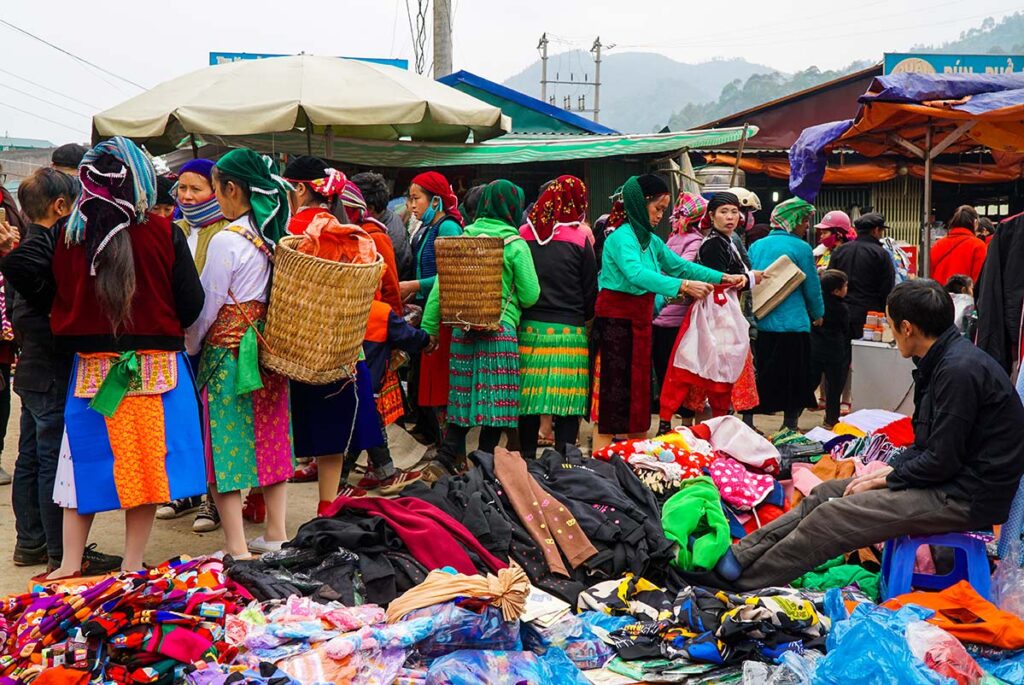
Experience the bustling atmosphere of the Dong Van Sunday Market, a vibrant gathering of locals from different ethnic groups, selling their produce, textiles, and handicrafts.
10. Ma Le Village
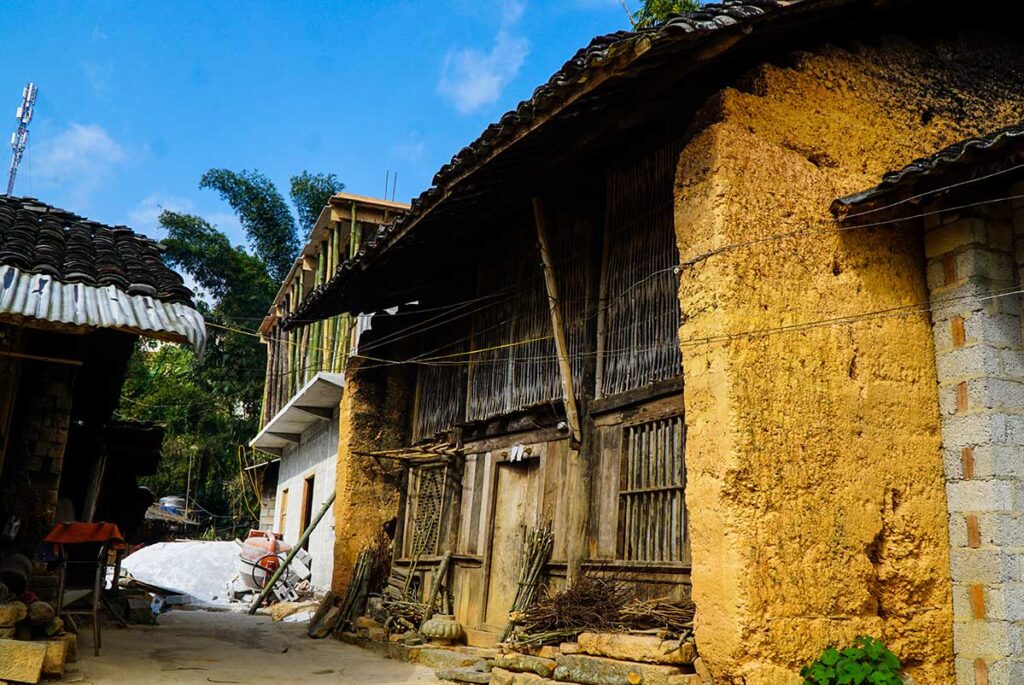
An authentic Lolo ethnic minority village, Ma Le offers an opportunity to witness the unique traditional customs and lifestyle of the local community, surrounded by breathtaking terraced rice fields and towering mountains.
How to get there
Location
Dong Van Karst Plateau is located in Ha Giang province in the northeastern part of Vietnam, near the border with China. The plateau encompasses four districts: Dong Van, Quan Ba, Yen Minh, and Meo Vac.
Transfer options
To explore the Dong Van Karst Plateau, you will begin your journey in the capital of Ha Giang province, Ha Giang City. This city is accessible by road from either Sapa or Hanoi.
If you are coming from Hanoi, the journey takes approximately 6 to 7 hours. Here are your options for transportation:
- Sleeper bus: A cost-effective option to save time by traveling during the night, but some travelers may find it less secure.
- VIP sleeper bus: For a few extra dollars, you can enjoy almost twice the space and more comfort compared to regular sleeper buses.
- Limousine bus: These comfortable buses operate in the early morning and afternoon during the day, providing a pleasant travel experience.
- Private transfer: For greater flexibility, you can opt for a private car or van with a driver to explore the region at your own pace.
Getting around
Ha Giang Loop
The Ha Giang Loop is a popular route that takes you through all four districts of the Dong Van Karst Plateau, allowing you to visit most of the major sights along the way. The loop can be completed in a minimum of 3 days, but you can extend it to 4, 5 days, or longer, depending on your preferences and desire to explore more or engage in activities like trekking.
Motorbike
The best way to experience the Ha Giang Loop is on a motorbike, as it offers a sense of adventure and freedom while exploring the stunning plateau. However, it is essential to have a proper motorbike license, a valid International Driving Permit (IDP), and prior motorbike driving experience. Alternatively, you can join an experienced guide on the back of a motorbike for a safer adventure.
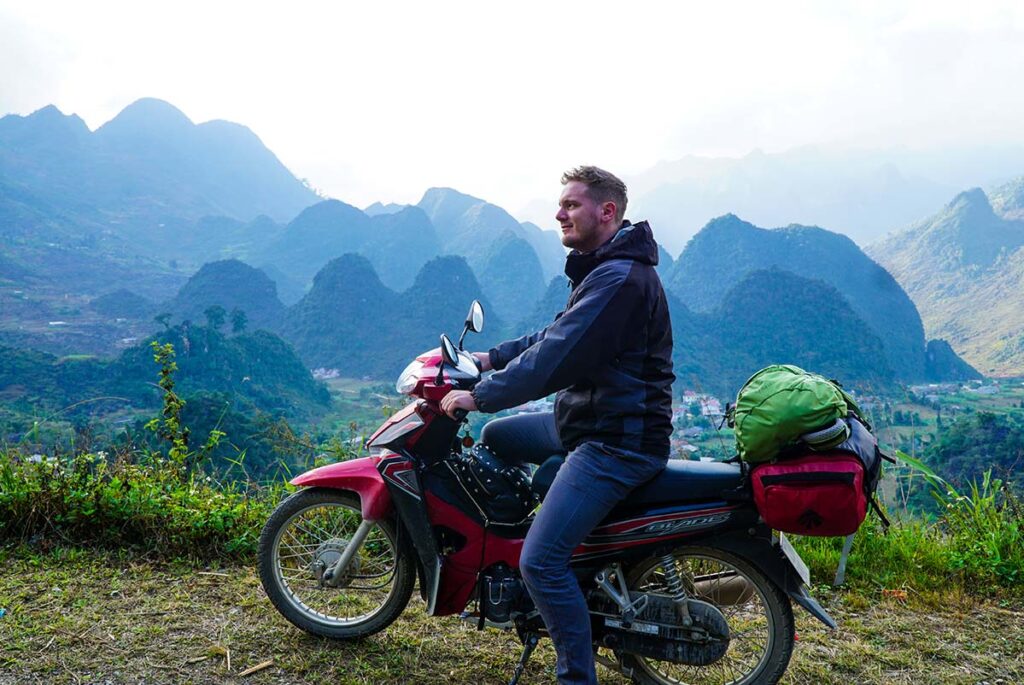
Car
For those who prefer not to travel by motorbike, a car is a suitable option. It provides more comfort and better protection against weather conditions like rain, hot summers, and cold winters.
Trekking
Trekking is a highly underrated activity in Ha Giang, as many visitors focus solely on the loop by motorbike or car. However, walking is perhaps the best way to explore the Dong Van Karst Plateau, allowing you more time to immerse yourself in the breathtaking scenery and visit ethnic minority villages up close.
Where to stay?
Type of accommodation
- Homestays: Staying in an ethnic homestay provides a unique experience to immerse yourself in the local cultures, though it may not offer much comfort or luxury.
- Hotels: Hotels offer more comfort with private bathrooms and AC, but they may lack the authentic connection with the local culture.
- Lodges/Retreats: While a more expensive option, lodges and retreats provide a good balance between comfort and a local experience.
Best towns to stay
- Ha Giang City: This is the starting point for the loop, but you can skip staying here if you begin the loop immediately upon arrival.
- Yen Minh: While there aren’t many accommodation options, it’s a good stop if you want to take your time or started your journey later in the day.
- Dong Van: The town of Dong Van and its surrounding areas are popular places to stay, offering many sights to explore and various accommodation choices.
- Yen Minh: Another popular spot on the Dong Van Karst Plateau with a growing selection of accommodation options.
- Du Gia: A charming little town of minorities, ideal for staying if you plan to complete the loop in four days or longer.
Tips for visiting Dong Van Karst Plateau
Respect the local culture: The plateau is home to various ethnic groups living traditional lives. Always ask for permission before taking photos of the ethnic people and dress appropriately to show respect.
Plan to visit markets: The ethnic markets are a significant highlight of the Dong Van Karst Plateau, but most of them are held only once a week. Plan your trip accordingly to experience these vibrant markets.
Go with local guide: While traveling alone may provide a sense of freedom and cost savings, having a guide can enhance your experience significantly. They can take you to amazing places, lead you on treks, and help you communicate with the local ethnic groups. Their expertise will enrich your journey.
Be prepared for changing weather: The weather in the plateau can be unpredictable, with sudden rain showers or temperature fluctuations. Bring layers of clothing to adjust to the conditions and ensure you have proper rain gear.
Bring enough cash: While some bigger towns may have ATMs, many rural areas in the plateau do not. It’s essential to carry enough cash for your entire trip, including accommodation, meals, and any souvenirs you may want to purchase.
Embrace the local cuisine: Try the local dishes and specialties offered in the region. The ethnic minority communities have unique culinary traditions that you won’t find elsewhere, so be open to new flavors and dishes.
Be mindful of waste: The Dong Van Karst Plateau is an ecologically sensitive area. Practice responsible tourism by minimizing waste and disposing of trash properly. Respect the natural environment and leave no trace behind.
FAQ about Dong Van Karst Plateau
Is there a permit for Dong Van Karst Plateau?
Yes, you will need a permit to visit the Dong Van Karst Plateau, especially if you plan to venture into the border areas. The permit can usually be obtained easily in Ha Giang city before starting your journey.
Do I visit Dong Van Karst Plateau in the Ha Giang Loop?
Absolutely, the Dong Van Karst Plateau is an integral part of the Ha Giang Loop. As you traverse the loop, you’ll pass through districts like Quan Ba, Yen Minh, Dong Van, and Meo Vac, all of which are part of this stunning UNESCO-recognized geopark.
Can you do trekking in Dong Van Karst Plateau?
Yes, the Dong Van Karst Plateau offers various trekking opportunities to experience its unique geological features and stunning landscapes. Whether you’re a novice or an experienced trekker, you’ll find trails that suit your ability.
What is the best time to visit Dong Van Karst Plateau?
The best time to visit is during the dry season, which falls between October and April. During this time, you’ll experience more stable weather conditions, making your exploration more enjoyable and less challenging.
What can I expect to see in Dong Van Karst Plateau?
You can expect a variety of breathtaking landscapes characterized by limestone karsts, deep valleys, and high mountain ranges. The area is also rich in cultural diversity, with several ethnic minority groups residing in the region.

